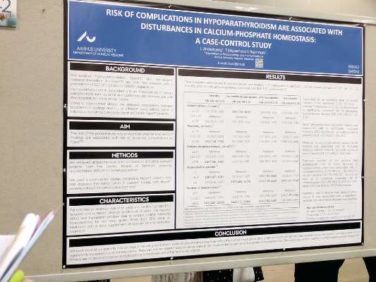FROM PLOS MEDICINE
A current prescription for an antidiabetic glitazone drug was associated with a reduced incidence of Parkinson’s disease among diabetic patients in a large retrospective cohort study, suggesting that peroxisome proliferation–activated receptor (PPAR) gamma pathways are a promising Parkinson’s disease drug target.
The incidence rate for Parkinson’s disease among 44,597 antidiabetic glitazone drug users included in the study, which used primary care data from the United Kingdom Clinical Practice Research Datalink, was 6.4 per 10,000 patients, compared with 8.8 per 10,000 among 120,373 other antidiabetic drug users (incidence rate ratio, 0.72), Ruth Brauer, Ph.D., of the London School of Hygiene & Tropical Medicine and her colleagues reported online July 21 in PLoS Medicine.
After adjusting for potential confounding variables such as smoking, other medications, head injury, and disease severity, the incidence rate ratio changed only slightly to 0.75. However, the incidence was reduced among only those with current glitazone prescriptions (incidence rate ratios of 0.59 vs. 0.85 for those with a current vs. past prescription), the investigators said, noting that it is unclear whether glitazone drugs prevent or slow progression of Parkinson’s disease, as only patients without a Parkinson’s disease diagnosis at the time they were prescribed a glitazone drug were included in the study (PLoS Med. 2015;12:e1001854 [ doi:10.1371/journal.pmed.1001854 ]).
The “strong evidence for a protective association” of glitazone exposure with respect to the clinical presentation of Parkinson’s disease in humans is consistent with previously reported findings in animal and in vitro studies, they said.
This study was funded by a research grant from the Michael J. Fox Foundation for Parkinson’s Research, and by a Medical Research Council methodology research fellowship, a National Institute for Health Research postdoctoral fellowship, and a Wellcome Trust Senior Research Fellowship in Clinical Science grant, each awarded to individual authors. Dr. Bauer reported having no disclosures; two coauthors reported receiving research funding from GSK or consulting for and holding stock in GSK.



